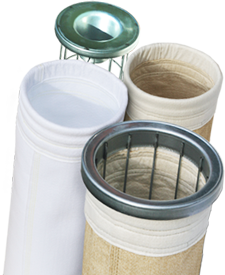Standard filter bags are a common feature in industrial processes, playing a crucial role in removing contaminants from liquids or gases. Over time, these bags can become clogged or lose their filtration efficiency, necessitating a changeout. In this article, we will explore the best practices for filter bag changeouts, focusing on minimizing downtime and maximizing efficiency.
- Understanding Filter Bag Changeouts
Before we dive into the best practices, let’s establish a solid foundation by understanding what filter bag changeouts entail. Filter bags are an integral part of filtration systems used to remove impurities and contaminants from liquids or gases. Over time, these bags become clogged or lose their filtration efficiency due to the accumulation of particles. This necessitates periodic changeouts to maintain the system’s performance.
The frequency of filter bag changeouts depends on several factors, including the type of contaminants being filtered, the quality of filter bags used, and the operating conditions. Regular inspections and monitoring are essential to determine when a changeout is needed.
- Preparing for a Filter Bag Changeout
- Assessing the Condition: The first step in any filter bag changeout is to assess the condition of the existing filter bags. This involves inspecting them for signs of wear, damage, or clogging. Proper assessment helps in determining whether the bags can be cleaned and reused or if they need replacement.
- Gathering Tools and Equipment: Ensure you have all the necessary tools and equipment on hand for a smooth changeout. This includes wrenches, safety gear, replacement filter bags, and any specific tools required for your filtration system.
- Safety Measures: Safety should always be a top priority during filter bag changeouts. Properly shut down and isolate the filtration system to prevent accidents. Ensure that your team is trained in safety procedures and equipped with the appropriate personal protective equipment (PPE).
- Scheduling: Plan the changeout schedule to minimize disruption to your operations. This may involve scheduling changeouts during planned downtime or low-production periods.
- Step-by-Step Guide to Efficient Filter Bag Changeouts
- Shutdown and Isolation: Begin by properly shutting down the filtration system and isolating it from the process flow. This prevents any contamination or spills during the changeout.
- Removal and Disposal: Carefully remove the old filter bags, taking care not to spill accumulated contaminants. Dispose of the old bags following local regulations and industry standards.
- Cleaning the Filter Housing: Thoroughly clean the filter housing to remove any remaining contaminants or debris. This ensures a clean and secure environment for the new filter bags.
- Installing New Filter Bags: Follow the manufacturer’s instructions to install the new filter bags. Pay close attention to proper sealing and alignment to ensure optimal filtration performance.
- Testing and Inspection: Before restarting the filtration system, conduct tests and inspections to ensure that the new filter bags are functioning correctly. This may involve pressure tests, flow rate measurements, and visual inspections.
- Restarting the System: Once you are satisfied with the installation and performance of the new filter bags, restart the filtration system. Monitor it closely during the initial run to ensure everything is functioning as expected.
- Tips for Minimizing Downtime
Minimizing downtime is crucial for maintaining productivity and efficiency in your operations. Here are some valuable tips to achieve this:
- Preventive Maintenance: Implement a preventive maintenance schedule for your filtration system. Regularly inspect and clean filter housings, and address any issues promptly to avoid unexpected shutdowns.
- Training: Ensure your personnel are trained in efficient and safe filter bag changeout procedures. Well-trained staff can perform changeouts more quickly and with greater precision.
- Spare Parts Inventory: Keep a stock of spare filter bags and parts on hand to minimize downtime in case of unexpected failures. Having replacements readily available can save valuable time.
- Predictive Maintenance: Consider implementing predictive maintenance techniques, such as condition monitoring and predictive analytics, to anticipate when filter bag changeouts will be needed. This proactive approach can help you plan changeouts more effectively.
- Maximizing Efficiency During Changeouts
Efficiency in filter bag changeouts goes beyond just reducing downtime. It also involves optimising your processes for long-term benefits. Here’s how to maximize efficiency:
- High-Quality Filter Bags: Invest in high-quality filter bags designed to last longer and offer superior filtration performance. While they may have a higher upfront cost, they can reduce the frequency of changeouts and overall operational costs.
- Automation and Advanced Technologies: Explore automation solutions and advanced filtration technologies that can streamline the changeout process. This may include automated bag changeout systems or self-cleaning filters.
- Data Monitoring: Implement a system for monitoring and recording data related to filter bag performance and changeouts. This data can be invaluable for future reference, trend analysis, and process optimization.
- Safety Considerations
Safety is paramount during filter bag changeouts, especially in industrial settings. Ensure that your team follows stringent safety protocols, including:
- Lockout-Tagout (LOTO): Use LOTO procedures to isolate energy sources and prevent accidental startup during changeouts.
- Personal Protective Equipment (PPE): Provide appropriate PPE, including gloves, eye protection, and respiratory protection, depending on the nature of the contaminants being handled.
- Hazardous Materials Handling: If your filtration process involves hazardous materials, follow strict protocols for their safe handling, containment, and disposal.
Case Studies and Success Stories
Real-world examples and success stories can provide valuable insights into the benefits of efficient filter bag changeouts. Companies that have implemented best practices have seen quantifiable improvements in their operations, such as reduced downtime and increased productivity. These case studies can serve as inspiration and motivation for implementing similar practices in your own
Conclusion
Filter bag changeouts are an inevitable part of industrial filtration processes. By following the best practices outlined in this article, you can minimize downtime, maximize efficiency, and ensure the continued success of your operations. Prioritizing safety, preventive maintenance and the use of high-quality filter bags will ultimately lead to smoother and more cost-effective filtration processes in your industrial setting.


